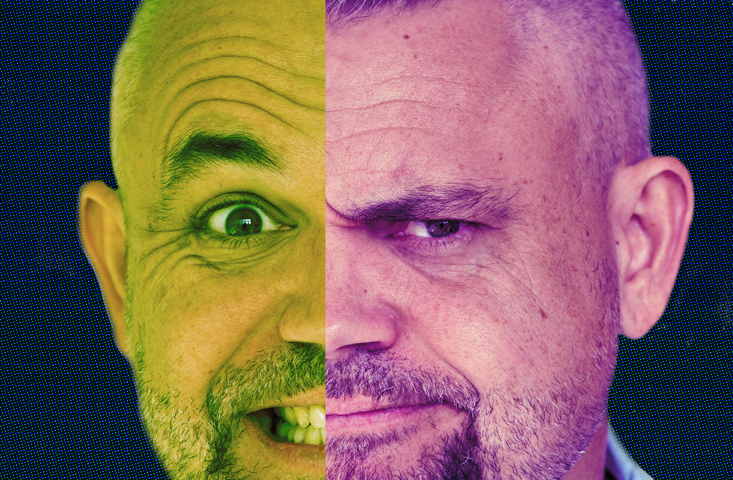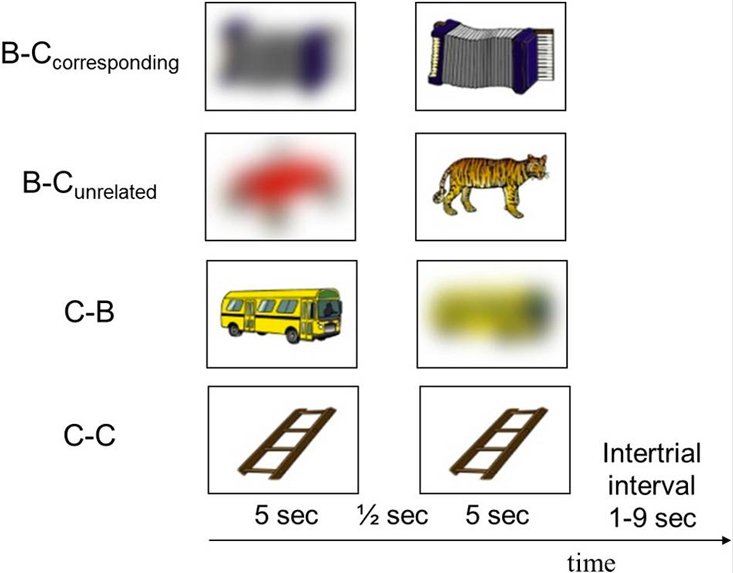An amusing anecdote involving Darwin epitomizes the power of curiosity in creative people. When Darwin arrived at Cambridge in 1828, he became an avid collector of beetles. Once, after stripping the bark from a dead tree, he found two ground beetles and caught one in each hand. At that point, he caught sight of a rare crucifix ground beetle. Not wanting to lose any of them, he popped one beetle in his mouth to free a hand for the rarer species. That particular adventure did not end well. The beetle in Darwin’s mouth released an irritating chemical and he was forced to spit it out, apparently losing all three beetles in the process. The disappointing result notwithstanding, the story does demonstrate curiosity’s irresistible appeal. But curiosity can also be an anxious and unpleasant experience. Do both states exist simultaneously in the brain?
Does the brain respond similarly to the stimulus of novelty, surprise, or the simple desire to avoid boredom?
Since the early 1990s, neuroscientists have added a powerful new tool to their research arsenal, one that literally enables them to image curiosity in action in the brain. Functional magnetic resonance imaging (fMRI) is a procedure that allows researchers to examine which regions of the brain are activated during particular mental processes. The technique relies on the fact that when a certain area of the brain is used intensively, the energy required for the neural activity results in an increase in the blood flow into that region. The working brain can therefore be mapped in detail by taking snapshots of the changes in the blood flow, using the blood-oxygen-level-dependent (BOLD) contrast—the fact that oxygenated blood has different magnetic properties from deoxygenated blood and that the relative difference can be imaged. When combined with supplementary cognitive research, fMRI offers a new dimension to the studies of curiosity. A few neuroscientific experiments have been particularly innovative and influential in advancing our understanding of the neurophysiological underpinnings of curiosity.

In a seminal investigation in 2009, Caltech researchers Min Jeong Kang, Colin Camerer, and their colleagues used fMRI with the goal of identifying the neural pathways of curiosity. The scientists performed a test in which they scanned the brains of 19 people with fMRI while these folks were presented with 40 trivia questions. The questions, on various topics, were specially selected so as to create a diverse mixture of high and low specific-epistemic curiosity, that is, interest in specific knowledge. One question asked, “What instrument was invented to sound like a human singing?” Another, “What is the name of the galaxy that Earth is a part of?” The participants were asked to sequentially read a question, guess the answer (if they didn’t actually know it), rate their curiosity to find out the correct answer, and indicate how confident they were in their guess. In the second stage, each subject saw the question presented again, immediately followed by the correct answer. (In case you are curious, the answer to the first sample question is the violin; to the second, the Milky Way.) The reported curiosity was found to be an inverted-U-shaped function of the uncertainty.
Satisfying one’s curiosity is comparable to having good food, good wine, or good sex.
The fMRI images showed that in response to self-reported high curiosity, the brain regions that were significantly activated included the left caudate and the bilateral prefrontal cortex (PFC)—areas that are known to be energized on anticipation of rewarding stimuli. This anticipation is the type of feeling you have before the curtain goes up on a play you have wanted to see for a long time. The left caudate had also been shown to be activated during acts of charitable donation and in reaction to punishment of unfair behavior, both of which are perceived as rewarding. Kang and her colleagues’ findings were therefore consistent with the idea that epistemic curiosity—that is, the hunger for knowledge—elicits anticipation of a reward state, which indicates that the acquisition of knowledge and information has value in our minds. Somewhat surprisingly, though, the brain structure known as the nucleus accumbens, which is thought to play a central role in the reward and pleasure circuits (and is one of the most reliably activated regions in reward anticipation), was not activated in Kang and her colleagues’ experiment. The researchers also found that when the correct answer was revealed to the subjects, the regions of the brain that were significantly energized were those typically associated with learning, memory, and language comprehension and production (such as the inferior frontal gyrus). Notably, activations were found to be more powerful when the participants were shown the answers to questions for which they had previously guessed incorrectly than following correct guesses. The subjects also exhibited enhanced memory of correct answers when they had initially been wrong. A subsequent behavioral study showed that a higher curiosity in the first session correlated with better recall of surprising answers even 10 days later. This result could perhaps be expected, since the information is considered more valuable and the potential for learning is greater when a mistake is being corrected (concerning topics you are actually curious about). On the other hand, the fact that the presentation of the correct answer did not significantly activate other brain regions that are traditionally known to respond to the receipt of reward was somewhat puzzling.
We should remember that there is one uncertainty that almost inevitably plagues all neuroimaging studies. While fMRI can indeed map the regions of the brain that are active when at least some form of epistemic curiosity is induced (and, as just discussed, those regions were found to be the ones that are associated with the anticipation of reward), those very same regions (such as the left caudate and the PFC) are also activated in a variety of other brain functions. Consequently, the inferred connection between curiosity and reward anticipation would have been rather tenuous were it not for the supporting evidence that comes from cognitive psychology.

To further solidify their findings, Kang and her collaborators performed an additional test, crafted so as to enable a distinction between true reward anticipation and the simple function of increased attention (which in previous experiments had also been found to activate the left caudate). The new experiment had two components. In one, the researchers allowed the subjects to spend at any time one of 25 tokens to find the correct answer to one of 50 questions (10 questions were added to the original 40). Since the number of tokens equaled only half of the number of questions, the implication was that by spending a token on a particular answer, subjects were opting to give up on another. In a second condition of the experiment, subjects could decide to wait between five and 25 seconds for the answer to appear, or they could quit waiting and skip to the next question, thereby missing out on the correct answer to the preceding question. Both actions (spending a token or waiting for an answer) came at a certain cost, either of resources or of time. The results showed that spending tokens or time was strongly correlated with the expressed curiosity. This outcome considerably strengthened the interpretation of curiosity as an anticipation for reward since people are generally more inclined to invest (either time or money) in items or actions they expect to be rewarding.
Overall, in spite of the remaining uncertainties, the pioneering work of Kang and her colleagues did suggest that specific-epistemic curiosity is linked to anticipation of information that is viewed as a reward. The additional findings, which demonstrated a strengthening of memory in response to being initially curious but wrong, indicated that curiosity enhances the potential for learning. This finding may provide important clues for improving teaching methods and for communicating information more effectively.
As groundbreaking as Kang and her collaborators’ work was, however, it left many questions unanswered. In particular, this study explored only one kind of curiosity—specific-epistemic—the one that is expected to be evoked by such knowledge-based catalysts as trivia questions. Does the brain respond similarly to the stimulus of novelty, surprise, or the simple desire to avoid boredom? Does the response depend on the form of the stimulus? For example, are the processes in the brain the same when we become curious by examining an image rather than by reading a text? A study published in 2012 attempted to address a few of these intriguing questions.
Scanning people’s brains while they are being curious certainly provides for an exciting experiment. But how exactly do you ask someone to be curious? Even requesting that the participants rate their curiosity (say, on a 1–5 scale) is sure to introduce a certain amount of subjective ambiguity. Cognitive scientist Marieke Jepma of Leiden University in the Netherlands and her team used a different method from that of Kang and colleagues to pique the curiosity of her subjects. Specifically, Jepma decided to focus her attention on perceptual curiosity—the mechanism aroused by novel, surprising, or ambiguous objects or phenomena. The idea was to fan the embers of curiosity with equivocal stimuli, the type that are open to many interpretations. The researchers therefore scanned (using fMRI) the brains of 19 participants who were shown blurred pictures of various common objects, such as a bus or an accordion, which were difficult to identify because of the blurring. To manipulate the triggering and relief of perceptual curiosity, Jepma and her colleagues cleverly used four different combinations of blurry and clear pictures (The figure below illustrates the set of combinations): a blurred picture followed by its corresponding clear picture; a blurred picture followed by a totally unrelated clear picture; a clear picture followed by its corresponding blurred picture; and a clear picture followed by an identical clear picture. The subjects, therefore, never knew what to expect or whether their curiosity about the identity of the object would be relieved.

Since Jepma’s study was one of the very first experiments that attempted to demonstrate the neural correlates of perceptual curiosity, the results were sure to generate great interest, and they did not disappoint. First, Jepma and her collaborators discovered that perceptual curiosity activated brain regions that are known to be sensitive to unpleasant conditions (even though not exclusively to those). This was consistent with expectations from the information-gap theory—perceptual curiosity appeared to produce a negative feeling of need and deprivation, something akin to thirst.
Second, the researchers observed that the relief of perceptual curiosity activated known reward circuits. These findings were again consistent with the idea that the termination of the distressed state that typifies perceptual curiosity—by providing the desired information—or at least the reduction in its intensity, is perceived by the mind as rewarding. Simplistically put, being perceptually curious is a bit like being deprived, conflicted, or hungry. Satisfying one’s curiosity is comparable to having good food, good wine, or good sex.
Jepma and her collaborators uncovered a third interesting fact: The induction and reduction of perceptual curiosity acted to enhance incidental memory (memories formed without really trying), and they were accompanied by the activation of the hippocampus, a brain structure recognized to be associated with learning. This discovery provided additional support to the conjecture that igniting curiosity is a potent strategy not only to motivate exploration but also to strengthen learning.
The differences, rather than similarities, between Jepma’s results and those of Kang and her colleagues were particularly thought provoking. Jepma’s discoveries were generally consistent with (although not a proof of) curiosity being fundamentally a disagreeable state, while the Kang findings were consistent with (but again, not a proof of) curiosity being primarily a pleasurable condition. How can we reconcile these seemingly discrepant conclusions?
First, as I have already noted, Jepma’s study was expressly designed to investigate perceptual curiosity—the curiosity stimulated by ambiguous, odd, or perplexing stimuli. Even more precisely, the curiosity mechanism evoked by blurred images can be characterized as specific-perceptual, since the participating subjects were curious to know what particular fuzzy pictures represented. On the other hand, by examining the curiosity triggered by trivia questions, Kang and her collaborators’ study primarily explored the substrates of specific-epistemic curiosity—the intellectual desire for specific knowledge. On the face of it, therefore, the two studies seem to imply that different facets or mechanisms of curiosity may involve (at least partially) separate regions of the brain and may manifest themselves as distinct psychological states.
If confirmed, this interpretation could lend support to Jordan Litman’s binary or dual scenario. Litman proposed the existence of what he dubbed I-curiosity, the pleasurable emotion involved with interest, and D-curiosity, the aversive feeling of deprivation resulting from not having access to certain information. Combining the neuroscientific results with Litman’s conception conveys the impression that perceptual curiosity should perhaps be classified principally as D-type, while epistemic curiosity is basically of the I-type. This emerging picture is also consistent with the hypothesis by cognitive scientists Jacqueline Gottlieb, Celeste Kidd, and Pierre-Yves Oudeyer that “rather than using a single optimization process … curiosity is comprised of a family of mechanisms that include simple heuristics related to novelty/surprise and measures of learning progress over longer time scales.” This does not necessarily mean that different varieties of curiosity employ entirely separate sections of the brain. It could be that different types of curiosity involve some common brain core (such as the regions responsible for the feeling of anticipation) but may also activate somewhat separate circuits and chemicals, even though all of the brain operations have a certain degree of functional connectivity.
There is one uncertainty that almost inevitably plagues all neuroimaging studies.
Jepma and her colleagues cautiously noted, however, that a few uncertainties that exist in both their and Kang and her collaborators’ studies do not permit one to draw definitive conclusions. For instance, because of the fact that in the Kang experiment the trivia questions were always followed by the correct answers, it was not entirely clear whether the activation of particular brain components reflected general anticipation of feedback of some sort, curiosity about the specific correct answer, or a combination of both. This was precisely why Jepma’s team sometimes chose not to relieve the uncertainty induced by the blurred images and sometimes showed a totally unrelated clear image. This deliberate differentiation allowed the researchers to separate the activation produced by curiosity about the nature of the object in the image alone from that potentially created by the anticipation of some form of feedback that would perhaps unconfound the blurred pictures.
At the same time, however, Jepma’s team acknowledged that the fact that in their own experiment the clear image was revealed in only half of the trials introduced an additional ambiguity into the interpretation of the results. Specifically, it was impossible to determine to what extent the participants experienced uncertainty (and thereby curiosity) about the actual identity of the image, as opposed to uncertainty about whether or not a clear image would eventually be revealed (or a mixture of the two).
These inherent limitations in the Kang and Jepma experiments serve to illustrate how difficult research in cognitive psychology and neuroscience truly is. The brain is such a complex piece of hardware and the mind such a wonderfully elaborate and impenetrable piece of software that even the most carefully planned experiments always leave some room for unpredictability.
Still, I was so impressed with Jepma’s experiment that I became extremely curious to know what had led to it and what follow-up, if any, ensued. “Why did you decide to study curiosity?” I asked her in a Skype conversation.
“I was studying the dilemma between exploiting and exploring,” she explained. “You exploit things you already know and explore when you know very little. I was interested in how exploitation and exploration guide and direct your decision process.”
While this made perfect sense, it was still not a complete answer to my question, so I persisted. “And then?”
“Well, I realized that a chief motivation for exploration is curiosity, so that’s how I got into it. To my surprise, I discovered that very little research had been done on curiosity on the neuroscientific side, in spite of its enormous importance.”
“Have you done any additional work that perhaps hasn’t been published yet?”
She smiled. “How did you guess? I did a preliminary study to test whether individuals are prepared to endure even physical pain to relieve their curiosity.”
“And are they?”
“Not all were willing to suffer pain,” she said, “but a few were.”
Darwin, with beetles in his mouth, would no doubt be among them.
Mario Livio is an astrophysicist and bestselling author. His books include the national bestseller Brilliant Blunders and Why? What Makes Us Curious.
From Why?: What Makes Us Curious by Mario Livio. Copyright © 2017 by Mario Livio. Reprinted by permission of Simon & Schuster, Inc.






























